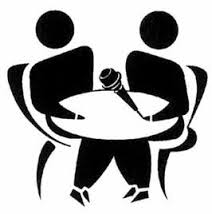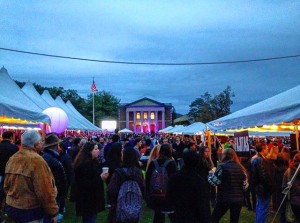Methods Exercise 4: Oral History vs. Ethnography
Oral History and Ethnography are two methods widely used in anthropology and other disciplines as a way of understanding daily life or past experience. In both methods, the researcher spends time with an informant, asking questions and recording details, but from there, the methodologies differ greatly.
An ethnographer’s goal is to gain an understanding of a community’s current experience. For this reason, they place themselves within the community they wish to study becoming both observers and participators in the customs and rituals of that community. Ethnographers spend a considerable amount of time with their informants in the community they are studying, at least a year in most cases. This kind of day-to-day interaction means that the ethnographer is not only exposed to the informants’ words by way of interviews, but is also able to observe how their informants interact with other members of the community. Thus, it is not only important for an ethnographer to have a good informant, a “native speaker” of the community, but they must also notice how that individual navigates that space in relation to others and interpret the significance of that. Ethnographers must be aware of changes in the community and how or if they relate to changes in time, leadership, events etc.
There are also several ways in which an ethnographer can conduct field notes. While they can simply transcribe interviews by way of recordings, like Oral Historians do, it is also very common for ethnographers to go through their day in the community and write down their observations and thoughts after the fact. This means that much of the final ethnography is subject to interpretation, and while direct quotes from informants may be present, the ethnography itself will inevitably be written through the ethnographer’s eyes and with his or her understanding via guidance of the informants. For this reason, it is important that ethnographers are forthcoming with their own backgrounds, opinions, and stakes in the research because they will most definitely color the way in which they “read” the community. For an ethnographer to have integrity, he or she must be aware that their own identity will influence what they not only how they interpret their experience in the community but also what they think is important enough to be remembered, recorded and ultimately shared. They must also rely all of this to their informants.
In these final few ways, ethnography and oral history overlap. From their interviews, Oral Historians are the ones that ultimately decide what is important, interesting, and relevant to the work they are doing. Thus, oral historians must inform their interviewees of the purpose of their project and what their motivations are for recording their history. Often, this reassurance in the value of the speaker’s testimony is necessary because oral historians are interested in reconstructing a specific moment in time from a point of view that is rarely considered. While we often think of history as a factual recounting of past events, it is important to realize that there are people behind the pen with their own opinions, ideas and motivations. There are people who get their stories told and people who are passed over, even though they were just as present. Oral historians strive to fill these holes in history and give academia, as well as the public, an opportunity to see history in a different light. However, oral historians are not simply inscribers of a narrator’s story. On the contrary, because their work is often designed to add to already existing historical knowledge, some oral historians feel that they have a responsibility to connect an individual’s life story to a broader historical narrative or context. The work might be largely comprised of the narrator’s own words and interpretations but how and why those experiences impact our understanding of history will be determined by the researcher themselves.
Oral historians and ethnographers differ in several ways. Ethnographers spend more time with their informants and become thoroughly enmeshed in the daily lives of the community as a way to understand what life is like for them right now. Oral historians however, meet with their narrators on a few occasions to record their experiences during a particular moment in history, a moment that the oral historian is actively trying to reconstruct through his or her narrator’s point of view. Both oral historians and ethnographers have a personal stake in their research and a reason why they think it is important to do. The questions they are trying to answer may be different, but both are simply trying to illuminate experiences that may be in the general public’s or academic public’s blind spot. Thus no one method is greater than the other, simply different.
Africana studies benefits greatly from both research methods because there are some questions that may be better answered through ethnography and others that are better suited to oral history. Much of African American as well as African diasporic history has been heavily silenced by dominant groups that ultimately got to decide who’s history got told. Because of this, finding narrators willing to share their own historical experiences is useful to all people wanting to gain a more holistic understanding of history. However, it is no secret that people of African decent are still largely marginalized throughout the world. Unfortunately, their position as second class citizens is often built into the very structure of the countries in which they inhibit, at least this is so in the United States. Thus, ethnographies that place researchers in the same communities as African Americans, for example, allows the ethnographer experience the current disparities first hand. When these ethnographies become public documents, it then allows society to grapple with these important issues. These two methods might approach Africana Studies from different angles, but just as history influences the present, oral history and ethnography work together and off each other to deepen the understanding of the black experience as a whole. Thus, both methods are important in the continual evolution of this field.
Word Count: 1005


